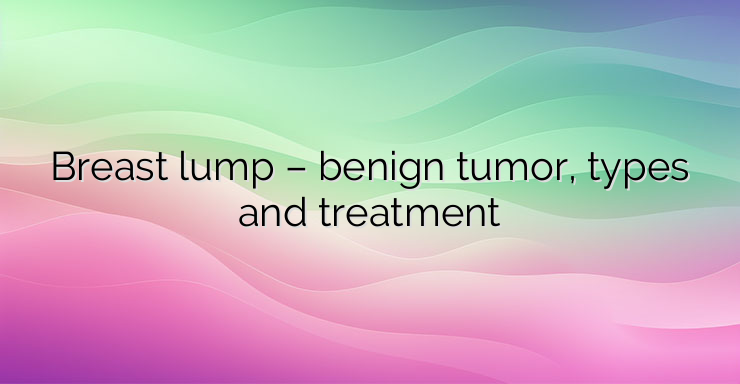The discovery of a “lump” in the breast in most cases is due to the development of a small cyst or fibroadenoma. Finding a lump in the breast often causes anxiety. However, these breast lumps are common and are not always a sign of malignancy. They are often the result of a benign cyst or fibroadenoma. In the presence of seals around the nipple or painful lumps under the breast, a consultation with a specialist is necessary. Men can also develop such breast lumps, which are rarer and often difficult to diagnose. What are the reasons? Benign lesions are distinguished from malignant cancers. Benign lesions are: Fibroadenoma; Fibrocystic nodes; Cysts, sometimes painful; Hamartomas – soft seals; Lipomas – soft seals. Fibroadenomas and fibrocystic nodules are not usually associated with cancer. Fibroadenomas are most common and develop in women of childbearing age – 15-49 years. They represent a solid mass that is movable, elastic and clearly visible. Fibrocystic nodes are often painful, sometimes they can be combined with calcifications. Breasts become sensitive to touch. When is cancer the cause? There are different types of breast cancer that can be detected by imaging and biopsy. Usually, cancerous breast lumps are hard, immobile, with irregular contours, fused with the surrounding tissue. What are the manifestations and complications? Swollen lymph nodes; Redness and pain; A change in the appearance of the skin nearby; Purulent secretion; Assessing Cancer Risk Most “lumps” are benign, but it is important to assess certain co-factors: Family and genetic history of cancer in the family; Age – the risk of cancer is quite low before the age of 35 and is highest around the age of 60; Palpation of the chest; Ultrasound and/or mammography to visualize the type of lesion; Sometimes a biopsy may be needed to determine the type of lesion; What is the treatment? The only breast lumps that require treatment are those that are due to cancers. However, some benign lesions can, if painful or cause discomfort, be surgically removed. Cysts require needle drainage. Fibroadenomas are usually treated with surgery. Benign lesions that pose a long-term risk of cancer should be followed up regularly with imaging studies. Treatment of malignant cancers Cancerous lesions need to be removed by surgery and then given treatment with radiotherapy and/or chemotherapy, depending on the type of cancer and its stage. Depending on the type of tumor, hormone therapy may also be used to limit the growth of cancer cells. References: https://www.passeportsante.net/fr/Maux/Symptoms/Fiche.aspx?doc=boule-sein


Leave a Reply